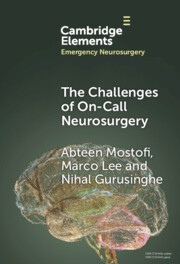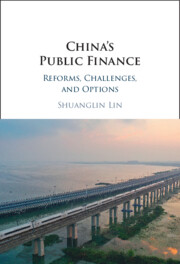119 results
Chapter 8 - How Colleges Can Support Working Students of Immigrant Origin
- from Part II - Experiences
-
-
- Book:
- Supporting College Students of Immigrant Origin
- Published online:
- 16 May 2024
- Print publication:
- 23 May 2024, pp 155-175
-
- Chapter
- Export citation
Chapter 19 - Stemming Undocumented Student Departure from Higher Education
- from Part IV - Looking Forward
-
-
- Book:
- Supporting College Students of Immigrant Origin
- Published online:
- 16 May 2024
- Print publication:
- 23 May 2024, pp 400-421
-
- Chapter
- Export citation
Why are some people in the UK reluctant to seek support for their pets?
-
- Journal:
- Animal Welfare / Volume 33 / 2024
- Published online by Cambridge University Press:
- 03 May 2024, e25
-
- Article
-
- You have access
- Open access
- HTML
- Export citation
Chapter 6 - The Constraints on the Prime Minister, 1721–2024
-
- Book:
- The Impossible Office?
- Published online:
- 14 March 2024
- Print publication:
- 14 March 2024, pp 221-274
-
- Chapter
- Export citation
Mental health challenges in Nigeria: Bridging the gap between demand and resources
-
- Journal:
- Cambridge Prisms: Global Mental Health / Volume 11 / 2024
- Published online by Cambridge University Press:
- 16 February 2024, e29
-
- Article
-
- You have access
- Open access
- HTML
- Export citation
Challenges for setting up psychiatric services in a trauma centre in India
-
- Journal:
- BJPsych International / Volume 21 / Issue 1 / February 2024
- Published online by Cambridge University Press:
- 13 November 2023, pp. 4-7
- Print publication:
- February 2024
-
- Article
-
- You have access
- Open access
- HTML
- Export citation

The Challenges of On-Call Neurosurgery
-
- Published online:
- 23 October 2023
- Print publication:
- 16 November 2023
-
- Element
- Export citation
15 - The International Electrotechnical Commission
- from Part V - Resilience in Technical Standardization
-
-
- Book:
- The Evolution of Transnational Rule-Makers through Crises
- Published online:
- 27 July 2023
- Print publication:
- 10 August 2023, pp 310-342
-
- Chapter
-
- You have access
- Open access
- HTML
- Export citation
12 - Concluding Reflections
-
- Book:
- Teacher Expertise in the Global South
- Published online:
- 18 May 2023
- Print publication:
- 01 June 2023, pp 251-254
-
- Chapter
- Export citation
“When Appearances Matter: A Taxonomy and Ethics for Demographic-Based Provider Requests”
-
- Journal:
- Cambridge Quarterly of Healthcare Ethics / Volume 32 / Issue 3 / July 2023
- Published online by Cambridge University Press:
- 09 January 2023, pp. 406-413
-
- Article
- Export citation
12 - Pathways to Sustainable Value Creation
- from Part IV - Thinking Ahead
-
-
- Book:
- Sustainable Value Creation in the European Union
- Published online:
- 01 December 2022
- Print publication:
- 15 December 2022, pp 301-314
-
- Chapter
- Export citation
Successes and challenges of the Home-grown School Feeding Program in Sidama Region, Southern Ethiopia: a qualitative study
-
- Journal:
- Journal of Nutritional Science / Volume 11 / 2022
- Published online by Cambridge University Press:
- 30 September 2022, e87
-
- Article
-
- You have access
- Open access
- HTML
- Export citation
1 - An Overview of China’s Public Finance
-
- Book:
- China's Public Finance
- Published online:
- 22 September 2022
- Print publication:
- 22 September 2022, pp 1-20
-
- Chapter
- Export citation
7 - Infrastructure Development and Financing
-
- Book:
- China's Public Finance
- Published online:
- 22 September 2022
- Print publication:
- 22 September 2022, pp 197-231
-
- Chapter
- Export citation

China's Public Finance
- Reforms, Challenges, and Options
-
- Published online:
- 22 September 2022
- Print publication:
- 22 September 2022
Is music on the wane? A small mixed methods study exploring musical learning in the school reception class in the East of England
-
- Journal:
- British Journal of Music Education / Volume 40 / Issue 1 / March 2023
- Published online by Cambridge University Press:
- 06 September 2022, pp. 124-140
- Print publication:
- March 2023
-
- Article
- Export citation
Chapter 13 - Conclusion
-
- Book:
- Australian Politics in the Twenty-First Century
- Published online:
- 06 September 2022
- Print publication:
- 02 September 2022, pp 326-340
-
- Chapter
- Export citation
Being a Nurse During a Worldwide Pandemic: A Qualitative Study Exploring Nurses’ Perceived Challenges and Expectations During the COVID-19 Pandemic in Turkey
-
- Journal:
- Disaster Medicine and Public Health Preparedness / Volume 17 / 2023
- Published online by Cambridge University Press:
- 01 August 2022, e239
-
- Article
- Export citation
Identifying the Challenges of Simulating the Hospital Emergency Department in the Event of Emergencies and Providing Effective Solutions: A Qualitative Study
-
- Journal:
- Disaster Medicine and Public Health Preparedness / Volume 17 / 2023
- Published online by Cambridge University Press:
- 18 July 2022, e202
-
- Article
- Export citation
Challenges and Facilitators for Psychosocial Support when Aging and Dying in Place: A Rapid Review of the Literature
-
- Journal:
- Canadian Journal on Aging / La Revue canadienne du vieillissement / Volume 42 / Issue 1 / March 2023
- Published online by Cambridge University Press:
- 28 June 2022, pp. 135-153
-
- Article
-
- You have access
- HTML
- Export citation



